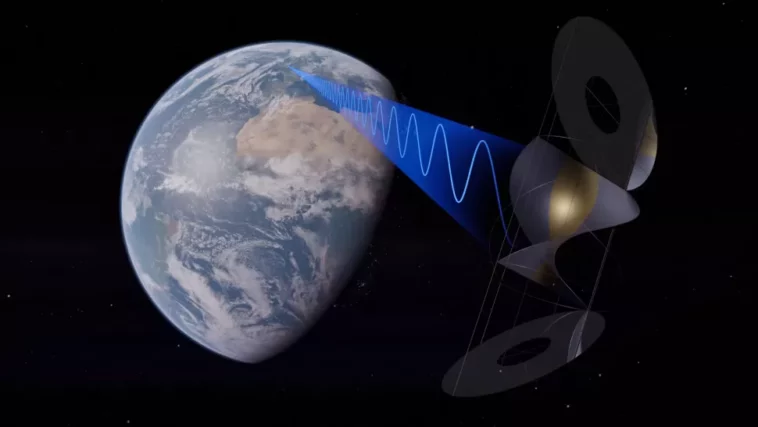Beaming solar power from space used to be considered science fiction. But in recent years, space agencies from all over the world have launched studies looking at the feasibility of constructing orbiting power plants for real.
Such projects would be challenging to pull off, the stakeholders agree, but as the world’s attempts to curb climate change continue to fail, such moonshot endeavors may become necessary.
According to the United Nations’ Panel on Climate Change(opens in new tab), the world is currently on track to warm by 4.5 degrees Fahrenheit (2.5 degrees Celsius) by the end of the century. That is 1.8 degrees F (1 degree C) above the threshold considered safe by the international climate science community to avoid disastrous climate change consequences.
In fact, to limit the warming to anywhere near that threshold, the world’s economies would have to cut down their greenhouse gas emissions by 45% by 2030. That would mean phasing out a lot of fossil-fuel-guzzling technology in a very short period of time.
For example, the United Kingdom would need at least 30 to 40 gigawatts of new on-demand sustainable power generation to get rid of all fossil fuel power generation (according to a 2019 statement(opens in new tab)). That’s the equivalent of building over 30 new nuclear power plant blocks.
Solar power plants in space, exposed to constant sunshine with no clouds or air limiting the efficiency of their photovoltaic arrays, could have a place in this future emissions-free infrastructure. But these structures, beaming energy to Earth in the form of microwaves, would be quite difficult to build and maintain.
The technology is less science fiction than you might think
Ian Cash is a British engineer, whose CASSIOPeiA Solar Power Satellite concept has been adopted by a U.K. government-backed space energy initiative as a starting point for a potential future space-based solar power plant demonstrator. A staunch advocate of the technology, Cash thinks that developing and building a solar farm in space presents fewer challenges than cracking nuclear fusion.
When it comes to space-based solar power, “there is no science to solve,” Cash told Space.com. “We have it all worked out pretty much since the 1970s, when NASA with the U.S. Department of Energy conducted a very large-scale study. We’ve proven the physics behind this ever since we first launched a communication satellite into geostationary orbit. You’ve got solar wings, which face the sun. And you have the body of the satellite, either with a parabolic dish or a phased array antenna, which faces the Earth. All the principles are the same; you’re converting solar energy to electricity, converting it to microwaves and beaming it to Earth. The only thing that’s different is the scale of the apertures.”
Andrew Wilson, a researcher at the Advanced Space Concepts Lab at the University of Strathclyde in Scotland, who led a study looking into the feasibility of space-based solar power, agrees: “I don’t think there’s technology that needs to be developed as opposed to just advancing through the technology readiness levels,” Wilson told Space.com. “There’s nothing really that needs to be invented.”
However, as detailed later in this piece, the required “technology advancing” is rather considerable.
It would provide 13 times more energy than an identical ground-based plant
Building solar power plants in space certainly isn’t an easy task, but it seems to have advantages — at least for some countries. The technology’s proponents claim that a solar-power plant in Earth’s orbit would produce 13 times more power than an equivalent installation located in the notoriously cloudy U.K.
Space-based solar power plants would easily produce gigawatts of power, matching the electricity output of nuclear power plants. In contrast, the U.K.’s largest solar power plant, Shotwick Solar Park(opens in new tab) in northern Wales, produces a meager 72.2 megawatts during peak insolation times. Only the world’s largest solar plants, sprawling installations in some of the sunniest countries, reach the gigawatt mark. For example, the Bhadla solar farm in India generates up to 2.7 gigawatts and covers 52 square miles (160 square kilometers) of land, which is more than double the size of Manhattan, according to the Ecoexperts.
Building a solar power plant in space would come with an enormous price tag. Once built, however, the plant would pay for itself much faster than any Earth-based renewable power generating technology, according to Wilson.




GIPHY App Key not set. Please check settings